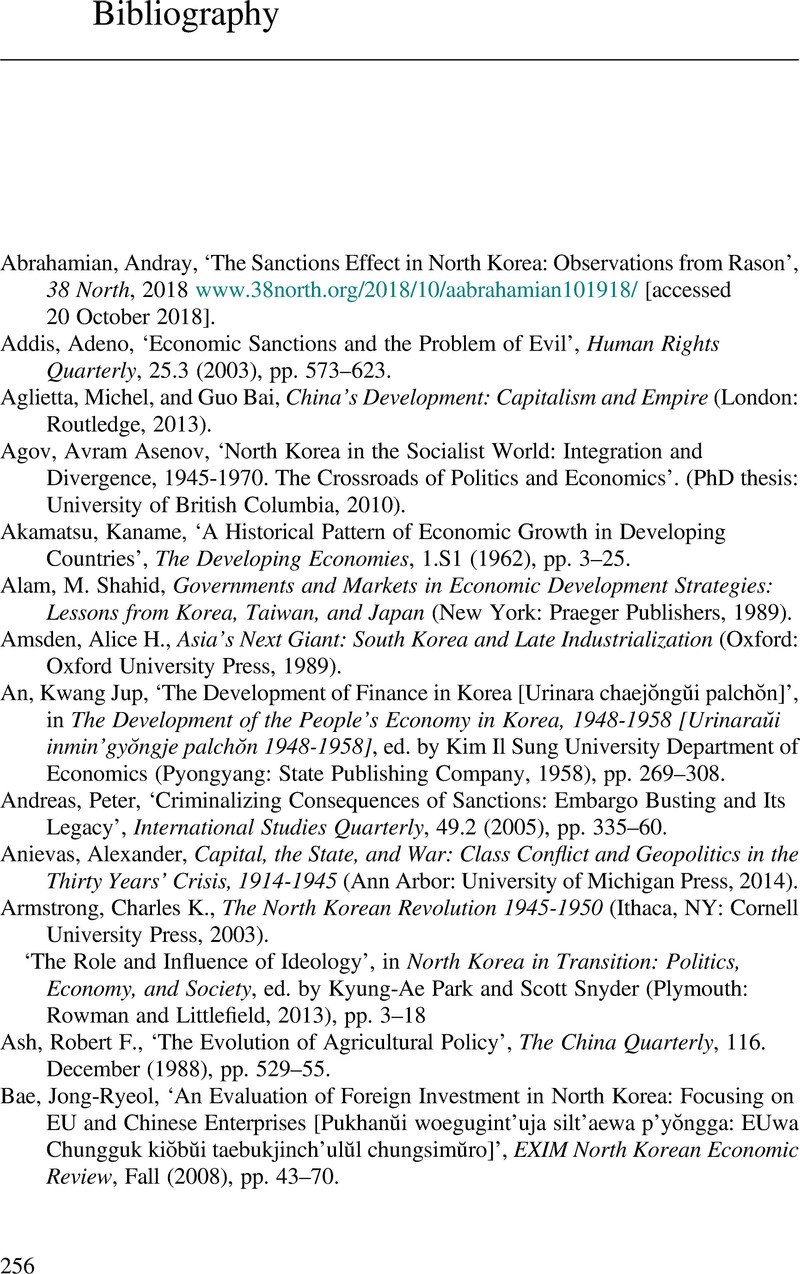Book contents
- North Korea and the Geopolitics of Development
- North Korea and the Geopolitics of Development
- Copyright page
- Dedication
- Contents
- Figures
- Tables
- Preface
- Introduction: The Development–Geopolitics Nexus in North Korea
- 1 State-Building and Late Development in North Korea
- 2 Post-War Reconstruction and Catch-Up Industrialisation
- 3 Geopolitical Contestation and the Challenge to North Korean Development
- 4 Economic Decline and the Crisis of the 1990s
- 5 Marketisation and the Transformation of the North Korean State
- 6 North Korean Economic Reform in the Shadow of China
- 7 Dependency in Chinese–North Korean Relations?
- 8 International Sanctions and North Korean Development
- Conclusion
- Bibliography
- Index
- References
Bibliography
Published online by Cambridge University Press: 10 September 2021
- North Korea and the Geopolitics of Development
- North Korea and the Geopolitics of Development
- Copyright page
- Dedication
- Contents
- Figures
- Tables
- Preface
- Introduction: The Development–Geopolitics Nexus in North Korea
- 1 State-Building and Late Development in North Korea
- 2 Post-War Reconstruction and Catch-Up Industrialisation
- 3 Geopolitical Contestation and the Challenge to North Korean Development
- 4 Economic Decline and the Crisis of the 1990s
- 5 Marketisation and the Transformation of the North Korean State
- 6 North Korean Economic Reform in the Shadow of China
- 7 Dependency in Chinese–North Korean Relations?
- 8 International Sanctions and North Korean Development
- Conclusion
- Bibliography
- Index
- References
Summary

- Type
- Chapter
- Information
- North Korea and the Geopolitics of Development , pp. 256 - 280Publisher: Cambridge University PressPrint publication year: 2021



